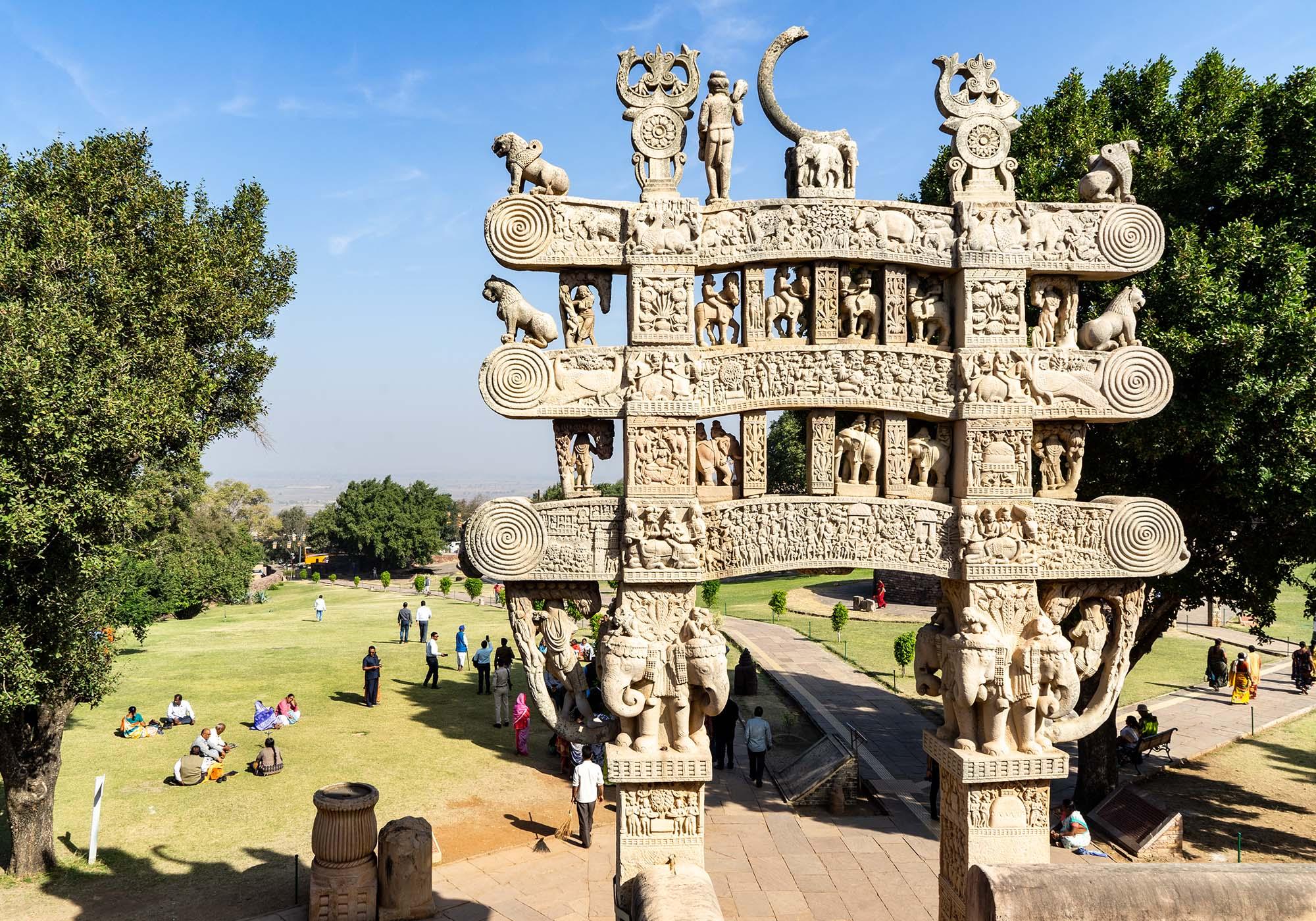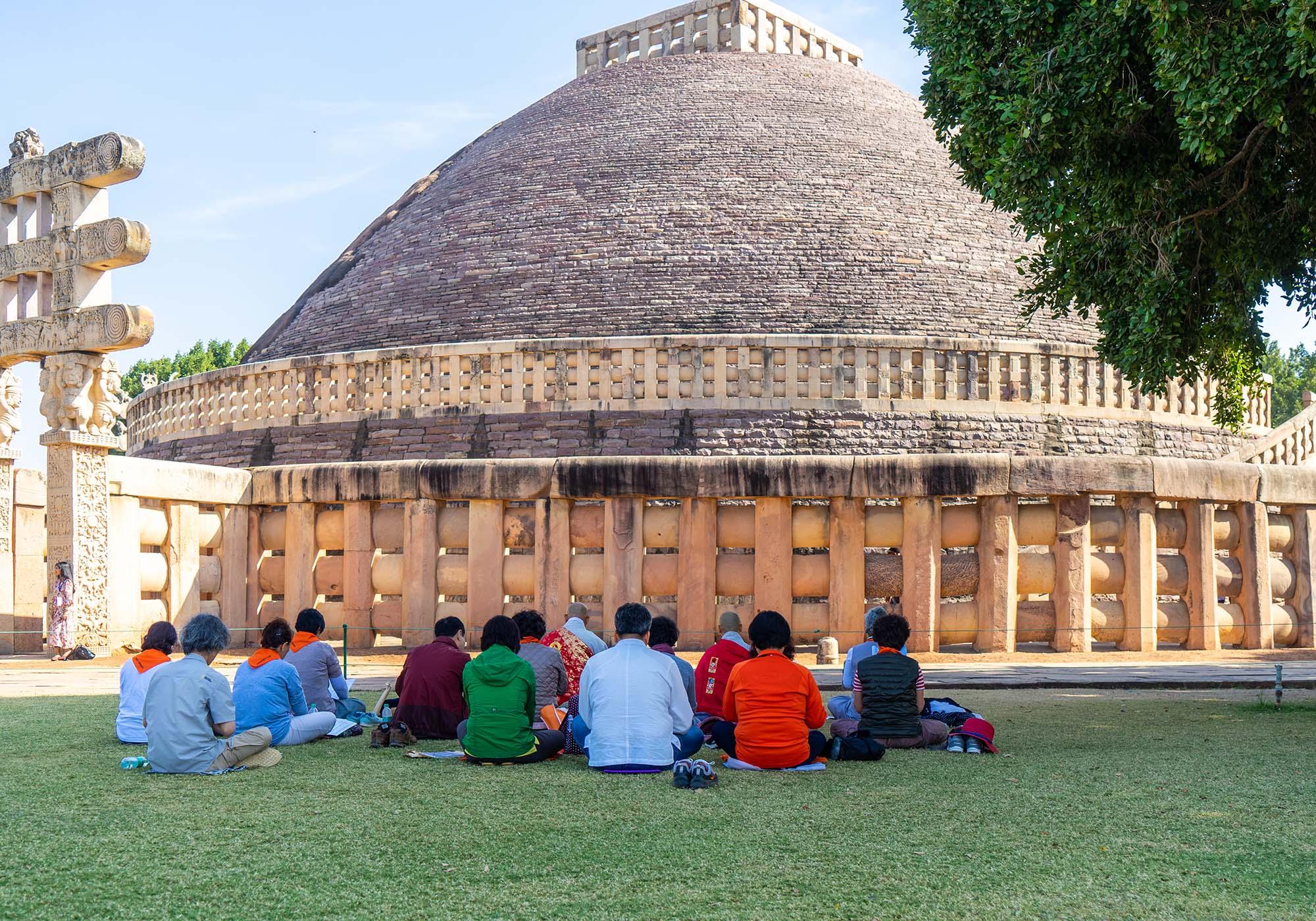Imagine a group of pilgrims traveling on foot two thousand years ago, the journey can be very challenging. Crossing rivers and forests, bearing adverse weather conditions, traversing through sparsely populated villages, and protecting themselves from predators, these pilgrims would finally reach the Great Stupa at Sanchi. Constructed by King Ashoka in the 3rd century BCE, the Stupa is fabled to contain the relics of the Shakyamuni Buddha himself. At the end of a long and unforgiving journey, their eyes would meet the architectural marvel and wonder of the great Vihara and scores of Stupas. After entering the monastery complex, the pilgrims would enter a circular path around the main Stupa through the magnificent Torana gateways. The Torana gateways are inscribed with beautiful bas-reliefs. The pilgrims would set their eyes at these reliefs and remember familiar stories and events of Buddhism set in stone. The culmination of this journey would have been almost spiritual and awe-inspiring to the travelers and would impart lessons and teaching to imbibe in real life.

Image Credit: Michael Turtle
In the world of art today, the viewer is responsible to interpret the meaning for themselves when they look at artworks in a gallery or a museum. The medium of art has become personal and abstract. However, in the 2050-year-old panels in the world heritage site of Sanchi, Madhya Pradesh, the purpose of art was something else. Immersive and inspiring stories were painstakingly carved on the famous gateways or Toranas at the Great Stupa of Sanchi. The purpose of these carvings was to instruct, inspire and remind the people of great events, famous pilgrimages, stories from Jatakas, and the life of the great Buddha.

Image Credit: Michael Turtle
A pilgrimage site of great importance to Buddhists, Sanchi was thronged by devotees and its importance can be gauged by the number of donations given by all kinds of people ranging from kings, nobles, courtesans, guilds, and affluent members of the society.
The intricate work was done by ivory carvers of Vidisha on hard stone. The Torana gateways of Sanchi have been carved with minute precision, as a single mistake would have destroyed months of hard work. King Satkarni II of the Satavahana empire erected these gateways around the stupas in all four directions.
Now let’s take a look at one of the famous bas relief on the western gateway of the Stupa No.1. Known as depicting the Mahakapi Jataka, the panel is a great example of ancient Indian art. Mahakapi Jataka is the story of a Bodhisattva (an enlightened being working for the benefit of others till all attain Buddhahood), who was born as a king of monkeys. The monkeys ate mangoes from a great mango tree, which a king named Brahmadatta considered coveted, which can be seen on the top left part of the panel. The king attacked the tribe (on the lower part of the panel to the left, Brahmadatta can be seen sitting on a horse), the monkey king formed a bridge over the stream from his own body and saved the lives of his people (on the top part of the panel). Due to his efforts, the bodhisattva got injured and the king realized his mistake. Realizing his good deed, the king repented. Beneath the great mango tree at the top left part of the panel, the king can be seen as conversing with the dying Bodhisattva and taking advice on the duties of a good king.

Image Credits: Michael Turtle
The story has many teachings to impart. One should be selfless and helpful to his fellow beings. One should be ready to sacrifice for his community. Greed brings pain and misery and that even the mightiest should realize their mistakes and atone. The stunning artworks at Sanchi have many stories to tell. However, it is curious as to how those travelers must have felt two thousand years ago. Art intended to inspire people to be good with all and sundry and make better choices in life, and that is something all of us should imbibe from the same.



















